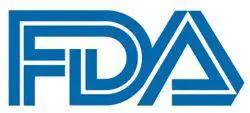News
Article
FDA Approves Inotuzumab Ozogamicin for Pediatric CD22+ B-Cell Precursor Acute Lymphoblastic Leukemia
Author(s):
The FDA has approved inotuzumab ozogamicin for pediatric patients with relapsed/refractory CD22-positive B-cell precursor acute lymphoblastic leukemia.
FDA

The FDA has approved inotuzumab ozogamicin (Besponsa) for the treatment of pediatric patients aged 1 year and older with relapsed or refractory CD22-positive B-cell precursor acute lymphoblastic leukemia (B-ALL).1,2
The efficacy of the agent was examined in the phase 2 Study WI203581 (ITCC-059; NCT02981628). The complete remission (CR) rate achieved in all patients (n = 53) was 42% (95% CIm 28.1%-55.9%), with a median CR duration of 8.2 months (95% CI, 2.6-not evaluable). Of those who experienced a CR (n = 22), 95.5% (95% CI, 77.2%-99.9%) achieved minimal residual disease (MRD) negativity based on flow cytometry; based on RQ-PCR, 86.4% (95% CI, 65.1%-97.1%) of patients achieved MRD-negative status.
About Study W1203581 (ITCC-059): Eligibility, Treatment, Objectives, and More
The multicenter, single-arm, open-label study enrolled pediatric patients who were at least 1 year old but no older than 18 years. Patients needed to have relapsed or refractory, CD22-positive B-ALL.
Two dose levels of inotuzumab ozogamicin were evaluated in a total of 53 patients. In 12 patients, the agent was administered at an initial dose of 1.4 mg/m2/cycle, approximately 0.78 times the recommended initial dose. In 41 patients, the agent was given at 1.8 mg/m2/cycle. Premedications included 1 mg/kg of methylprednisolone with a maximum of 50 mg, an antipyretic, and an antihistamine.
The key efficacy end point was CR, which was defined as less than 5% bone marrow blasts and the absence of peripheral blood leukemic blasts, full recovery of peripheral blood counts, duration of CR, and the proportion of patients with CR and MRD negativity.
A median of 2 cycles of therapy was received, with a range of 1 to 4 cycles. The median patient age was 9 years (range, 1-17) and 55% of patients had second or greater relapsed B-ALL. Sixty-eight percent of patients were male.
Safety Findings
Serious toxicities occurred in 62% of patients, and 8% of patients experienced adverse reactions that proved to be fatal. Fatal toxicities included multiorgan failure, lung infection, sepsis, and encephalopathy. Moreover, 11% of patients required dose interruptions due to an adverse effect (AE) and 21% experienced an AE that led to permanent treatment discontinuation.
The most common AEs experienced by at least 5% of the 53 pediatric patients with CD22-positive, relapsed/refractory B-ALL who received inotuzumab ozogamicin in the study included pyrexia (all grade, 49%; grade ≥3, 4%), edema (19%; 0%), fatigue (17%; 0%), pain (15%; 2%), chills (8%; 0%), anemia (45%; 38%), febrile neutropenia (28%; 28%), vomiting (45%; 2%), nausea (32%; 0%), abdominal pain (25%; 2%), constipation (19%; 2%), stomatitis (17%; 6%), diarrhea (11%; 0%), infection (43%; 23%), hemorrhage (42%; 6%), hypotension (6%; 4%), headache (21%; 0%), rash (19%; 4%), pruritus (9%; 0%), hyperhidrosis (6%; 0%), extremity pain (19%; 2%), back pain (6%; 0%), neck pain (6%; 0%), and muscular weakness (6%; 0%).
Additional AEs experienced by 5% or more of patients included cough (all grade, 17%; grade ≥3, 0%), dyspnea (8%; 2%), hypoxia (8%; 4%), veno-occlusive disease (15%; 13%), hyperbilirubinemia (9%; 8%), reduced appetite (11%; 4%), tumor lysis syndrome (11%; 11%), weight increase (8%; 2%), infusion-related reaction (8%; 0%), sinus tachycardia (6%; 2%), and anxiety (6%; 0%).
The most common laboratory abnormalities reported with the agent included decreases in platelet count (all grade, 100%; grade ≥3, 85%), neutrophil count (98%; 96%), white blood cells (98%; 89%), hemoglobin (96%; 42%), and lymphocyte count (87%; 73%), as well as increases in aspartate aminotransferase (87%; 21%), alanine aminotransferase (83%; 21%), gamma-glutamyl transpeptidase (79%; 27%), blood bilirubin (30%; 9%), alkaline phosphatase (28%; 0%), lipase (23%; 4%), and serum amylase (14%; 0%).
References
- FDA approves inotuzumab ozogamicin for pediatric patients with acute lymphoblastic leukemia. FDA. March 6, 2024. Accessed March 6, 2024. https://www.fda.gov/drugs/resources-information-approved-drugs/fda-approves-inotuzumab-ozogamicin-pediatric-patients-acute-lymphoblastic-leukemia
- Besponda. Prescribing information. Pfizer, Inc; 2024. Accessed March 6, 2024. https://www.accessdata.fda.gov/drugsatfda_docs/label/2024/761040s003lbl.pdf









